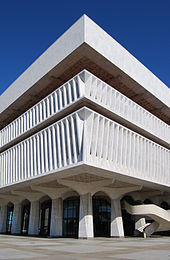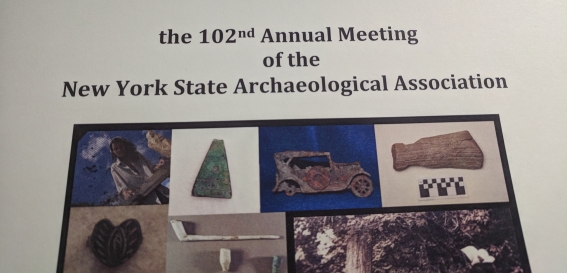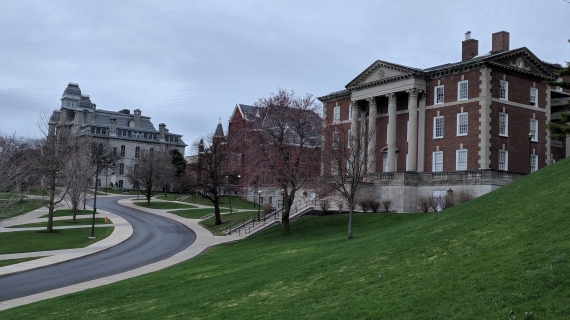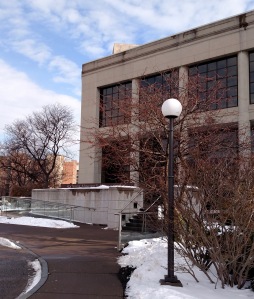April was a busy month for the Dating Iroquoia team!
Samantha Sanft visited the New York State Museum to collect samples from multiple Onondaga sites. Those samples are in the process of being prepared for submission to the Center for Applied Isotope Studies (CAIS) at the University of Georgia the Centre for Isotope Research (CIO) at the University of Groningen. This work brings us very close to having all of the samples identified in our proposal collected.

New York State Museum
The team also presented the preliminary results of the project at the New York State Archaeological Association meetings. The paper contained some preliminary modelling from site sequences in Ontario and New York. Thus far the latest results are articulating very well with our pilot study. However, until we are confident that new dates will not alter those preliminary results we are not going to post them here. Altogether, the paper was met with a good response. The NYSAA meetings also gave us a chance to confer with other researchers who are interested in chronology-building in the northeast. Jim Bradley, an expert on Onondaga archaeology, helpfully offered to seek out samples from collections we were unaware of!

NYSAA meeting program
After the meetings, Jennifer Birch visited the archaeology collections at Syracuse University. Here, she was able to access collections from sites that were the basis of James A. Tuck’s research on the Onondaga for the project. This visit provided the opportunity to collect samples for the project as well as to examine some excellent examples of the “archaeology of archaeology” — in particular, the kinds of expedient containers artifacts may be stored in. In this case, cigar boxes and seed bags.

Syracuse University
Finally, team members met at Cornell University for a day of updates and project planning before we all head off for summer fieldwork, dissertation research, and writing.

A windy day on Cayuga Lake in Ithaca, NY
The sample collection phase of our project is very nearly complete and we are looking forward to submitting the final set of samples for phase I of the project. Expect great things in fall 2018 as the first sets of formal modelling and interpretation come together!






